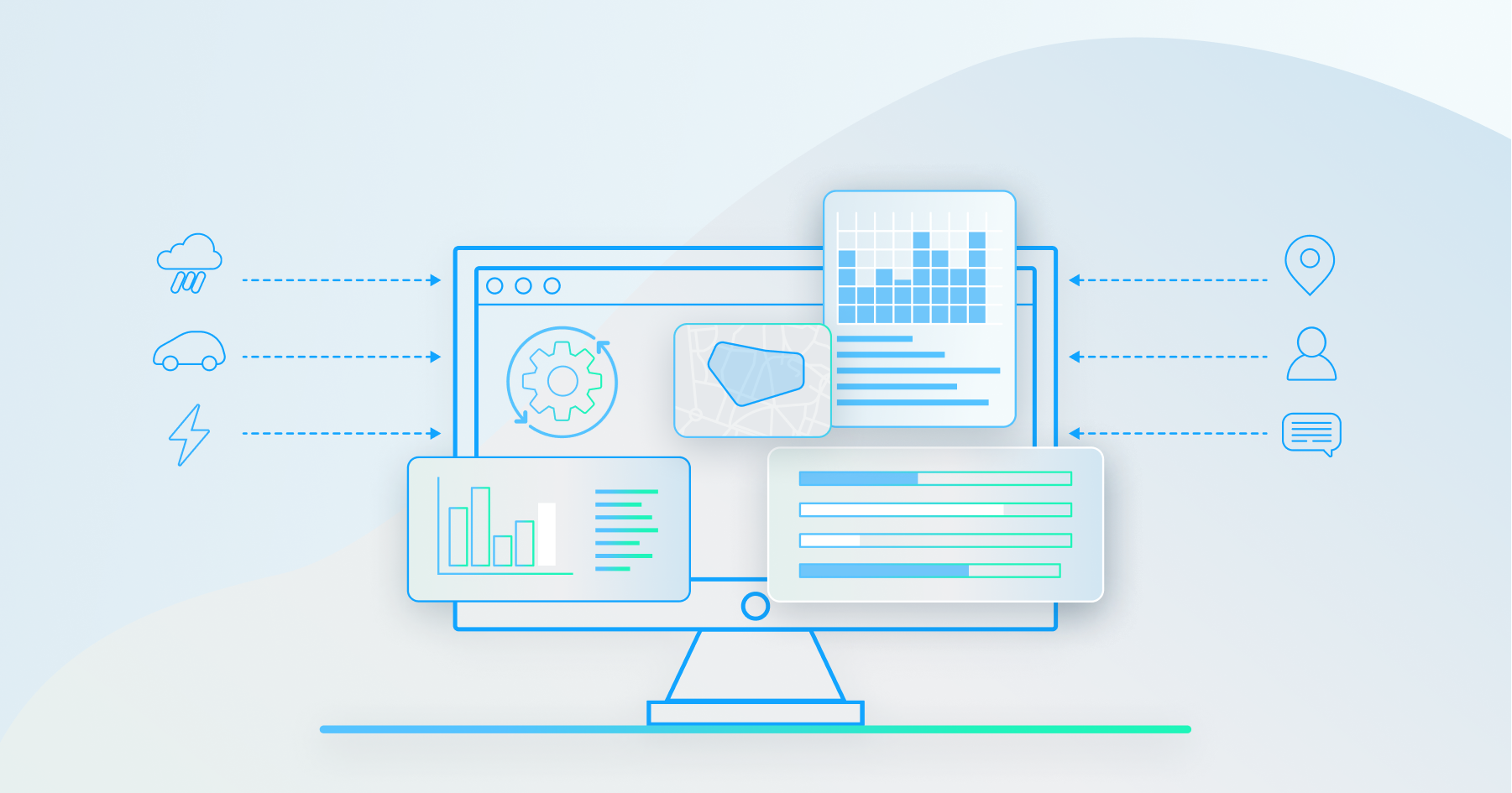







Data to Value: The Power of Data-Driven Optimization
Fleet optimization allows fleets to maximize the efficiency and productivity of their operations. It involves multiple strategies and techniques based on machine learning, automations and advanced algorithms to improve the utilization of vehicles, reduce operating costs, and improve customer experience.
To work well, optimization requires data - after all, you cannot improve what you cannot measure (and once you measure, you can put that data to work on your day-to-day operations, but we’ll get to that later).

We often get asked where we get our data from, and how we use it. Read on to find out.
From data to insights, we use various types of data
In order to generate actionable insights and optimize services, we collect data in three classes:
- Demand Data: This class of data includes information on booked rides, delivery calls, ride-hailing requests, user sessions, and other sources of demand for mobility services. By analyzing this data, Autofleet can gain insights into patterns and trends in user demand. This information is crucial for predicting future demand, identifying peak hours or high-demand areas, and optimizing resource allocation.
- Supply Data: Pertains to the fleet's state and encompasses details about the vehicles, such as make and model, capacity information, telematics data (e.g., vehicle location, speed, battery/fuel consumption), driver shift schedules, and driver skill information. This data provides a comprehensive understanding of the available resources and their status. Autofleet leverages this information to make informed decisions and ensure efficient resource allocation..
- Infrastructure data - Refers to information about the environment the fleet operates in. It encompasses maps, traffic data, city-specific information (e.g., road closures, events), weather information and predictions, airport arrivals and departures, and other relevant data sources. When it comes to EVs, we also integrate the charging infrastructure to collect data on charger locations, type, availability and rates. This data helps Autofleet understand the external factors that impact fleet operations, such as congestion, weather conditions, or special events.
The data comes together to form a complex picture that needs to be untangled in order to tease out information and actionable insights using AI and other advanced algorithms. Then these insights become practical strategies, like recommended routes, optimized dispatching, demand prediction, predictive maintenance, and real-time re-optimizations..
How to access vehicle data
The demand data is received through simple integration with our partner's systems, or by implementing solutions like Autofleet’s passenger app.
To understand vehicle and driver behavior, we employ direct OEM integrations or integrate to telematics providers and augment it with data coming directly from Autofleet’s Driver App. For example, data aggregators like Flespi, a telematics and IoT cloud backend platform, can provide an easy way to consume a variety of telemetry and GPS tracking data. Autofleet itself is agnostic to the source of the data and can connect to any type of data provider.

Drivers and other employees (be it full-time employees or freelance vendors) also provide ad-hoc data, both through analysis of their shifts and tasks, and through reports and feedback.
Getting the full picture - broad data means better optimizations
Vehicles and drivers do not operate in a vacuum, however. To optimize operations, we need to understand their environment too. So it is important for us to gather data on the city, territory, and geography of the fleet and its surroundings. This includes both static data, like street maps and parking, and dynamic information, like traffic or weather.
EV Charging, for example, requires both static data, to map the location of charging stations, and dynamic data with live charger availability. This helps fleet operators avoid long downtime and deadhead miles, as they look for an open spot to recharge quickly.
And lastly, it is important to understand customers’ behavior and the broader context in which the fleet operates in order to predict demand using AI. This includes collecting events and holidays information, geographical information, and taking into account historical demand data and seasonality.
To get all this additional data, Autofleet employs multiple input channels, gathering information from multiple sources. Autofleet’s platform is extremely flexible, able to ingest data from any origin - from legacy systems such as mainframes, files like PDF or CSV, or from direct integration to APIs.
How do we leverage the data to optimize fleets’ operations?
Autofleet has developed expertise in collecting and processing various sources of data and converting them into meaningful insights useful for fleet professionals. We are able to access this data easily, and it typically requires very little effort on our partners’ side to collect.
Armed with this data, we can streamline the day-to-day management of a fleet, automate and optimize operations to meet different KPIs, and help drive business development and growth.
Autofleet only uses data to provide the services our partners need. We don’t monetize it in any way, and the data remains in the partner's ownership at all times. Naturally, we are also compliant with data privacy regulations like GDPR, CCPA, and others.
The data is leveraged for every decision made on the platform. As an example, let’s highlight three main applications:
Assess, predict, and manage demand - understanding current demand for vehicles, and being able to project future demand with mathematical models is critical for any mobility service such as ride sharing, taxi, or rental and car sharing. It enables rebalancing of fleet resources to meet demand, and managing services like cleaning and maintenance without disrupting the service. In the taxi industry, for example, the ability to convert data into demand predictions enables companies to direct their drivers to high demand areas, thus reducing deadhead miles and increasing completion rates.

Manage and automate fleet operations - data allows Autofleet users to automate routine operations or create triggers for certain occurrences. For instance, rental fleets often set a rule that automatically blocks a vehicle, and sends it to the shop, if it has reached 10,000 km or 6 months have passed since its last visit. This saves the need to manually check odometers and allows fleet operators to enforce preventative maintenance throughout the fleet.

Data powered automations are a powerful tool to reduce downtime and improve customer satisfaction, and can provide many custom options tailored to your fleet.
Planning and simulations - Electrification poses a major challenge to fleet operators everywhere. Using data to simulate how your fleet will operate under various circumstances can help mitigate many of the issues you may otherwise face. It can give accurate answers in a risk-free environment. Simulations and planning tools also enable fleet growth and expansions into new markets and geographies. It is a powerful tool to assess infrastructure investments, fleet rightsizing, and multimodal fleet operations, as well as make informed procurement decisions, and answer other fleet related questions operators face.

At Autofleet, we go to great lengths to ensure procuring the data needed to power the optimization processes is easy and seamless for our partners. Our onboarding and implementation process makes it simple for our clients to start leveraging data to improve their decision making and performance from day one.
Summary
Data can enhance efficiency and productivity through machine learning, automation, and advanced algorithms to optimize fleet utilization, reduce costs, and improve the customer experience.
At Autofleet we can gather data from different sources and integration channels, making it easy, flexible and adaptable for our partners to use it. We use three classes of data: demand data, supply data, and infrastructure data to paint a full picture of the fleet operations and generate actionable insights that translate into practical strategies.



.png)





.jpg)


